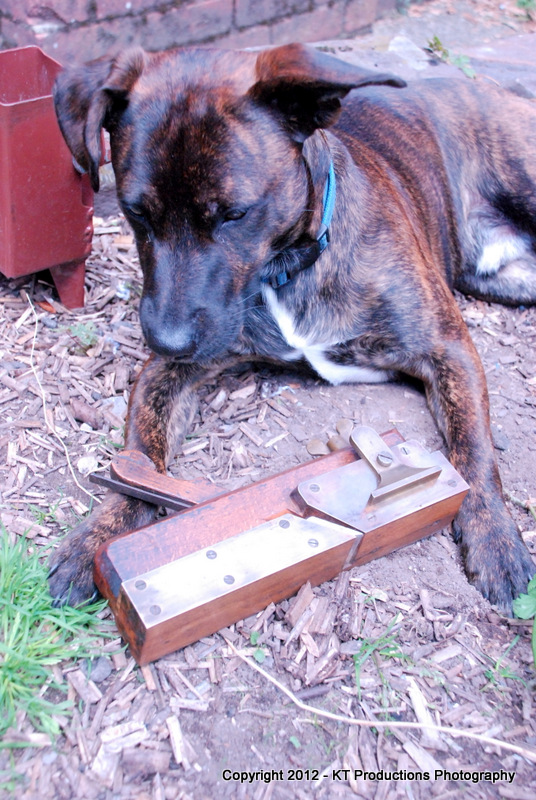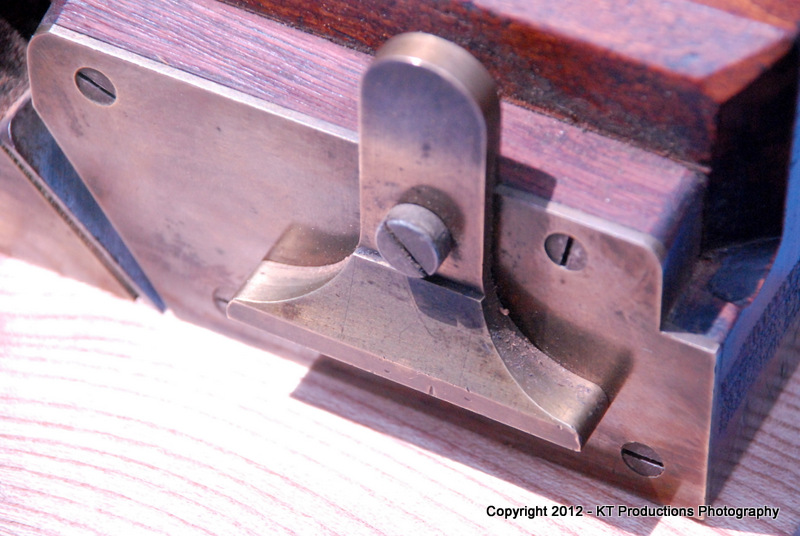jimi43
Established Member
Every so often....something happens to restore your faith in humankind.
The other day I received a PM...quite out of the blue from a forum member offering to send me a woodie he had "gathering dust" in his workshop. Not just any plane...but a GABRIEL plane!
I couldn't go to the boot fair this morning because Annie had to work and there was nobody to drive while I stopped ALFIE from jumping out of the car window....so I was in a bit of a grumpy mood...then the postman came!
Over to ALFIE....

As we can see...it's not just a GABRIEL plane but a GABRIEL FILLISTER plane....and an absolutely stunning one at that!

Now I'm not very good at this metal thing but my Dad says this is just superb engineering...

Certainly smells nice! :mrgreen:

Once again the slightly worn but unmistakeable zigzag boarder of the older planes...

...both on the maker stamp and on the contemporary owner..one Mr T.Thompson

...and many others overstamped from the same period at the turn of the 1800s...
We can hardly wait to play with it...more on that later...but Dad says he thinks the UKW Angel wants to remain nameless....so I will just say a BIG thanks to Richard....you are a very nice man!!! =D>

Oooooo LOOK! A bee!!! :lol:
ALFIE and JIM
The other day I received a PM...quite out of the blue from a forum member offering to send me a woodie he had "gathering dust" in his workshop. Not just any plane...but a GABRIEL plane!
I couldn't go to the boot fair this morning because Annie had to work and there was nobody to drive while I stopped ALFIE from jumping out of the car window....so I was in a bit of a grumpy mood...then the postman came!
Over to ALFIE....

As we can see...it's not just a GABRIEL plane but a GABRIEL FILLISTER plane....and an absolutely stunning one at that!

Now I'm not very good at this metal thing but my Dad says this is just superb engineering...

Certainly smells nice! :mrgreen:

Once again the slightly worn but unmistakeable zigzag boarder of the older planes...

...both on the maker stamp and on the contemporary owner..one Mr T.Thompson

...and many others overstamped from the same period at the turn of the 1800s...
We can hardly wait to play with it...more on that later...but Dad says he thinks the UKW Angel wants to remain nameless....so I will just say a BIG thanks to Richard....you are a very nice man!!! =D>

Oooooo LOOK! A bee!!! :lol:
ALFIE and JIM

















































